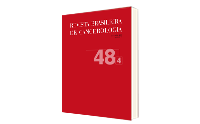Cancer care planning: a rough estimate study
DOI:
https://doi.org/10.32635/2176-9745.RBC.2002v48n4.2159Keywords:
Population Estimates, Cancer Care, Health System, Organization, Population Coverage, Neoplasms, Epidemiology, BrazilAbstract
The purpose of this paper is to assess Oncology care in Brazil, based in general presumptions and on the number of necessary units estimated from populational data and new annual cases expected, state by state and per region. Presumptions are applied linearly, equally calculated for all the states of the country, and attemps to provide the basis for the development of more accurate methods to assess the parameters required by regional care. Results from comparing chemo- and radiation therapy data among the different states evidence that, except for some states, the number of existing units is either excessive, enough or slightly deficient, but the number of treatments paid is less than the estimated state or regional needs. However, it does not apply to the Southeastern Region, whose states lack units and treatment - which is worsened when one considers that presumptions and estimates were based on the existing population, in this region are the most populated states of the country, and a large number of cases are treated out of the city of residence. At the end, suggestions for conforming oncology care are presented: 1) Apply factors to correct identified state and regional differences; 2) review accreditation, and only accreditate based on populational needs and a basic operational capability; 3) ensure financing to increase treatment production; and 4) advance on treatment control and assessment mechnisms, so that a qualitative service assessment model can be designed.





